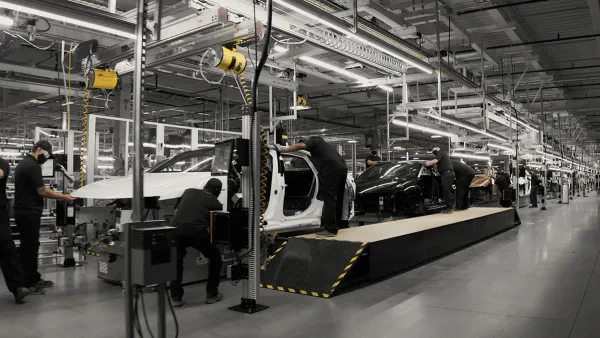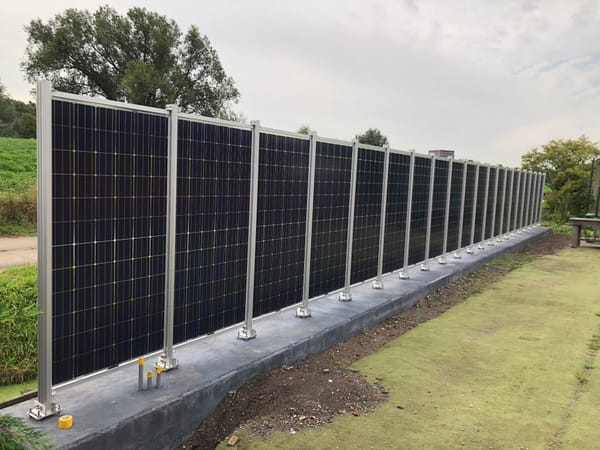One more big thing coming from COP28: Carbon credit trading
Good Afternoon!
With just about two weeks before COP28 begins, a negotiating group submitted extremely technical and complex proposed rules for international carbon credit trading. Right now carbon credit trading is voluntary, but it’s already big money, since most expect it will become mandatory at some point.
Approving the proposed carbon credit trading rules is one more big item COP28 will take up – and it could possibly change how much carbon emissions we actually reduce in a very big way.
And of course, a reminder of plans for this newsletter: I’ll publish again next Tuesday, and then daily for two weeks starting Friday, November 30, as I report from COP28 in Dubai. Tell your friends!
-Mike

The basic reason we continue to spew carbon dioxide into the air is because it’s an economic externality. If you take a taxi to get from one place to another, neither you, your driver, or the oil company that pulled the fuel out of the ground have to pay somebody money for the CO2 introduced into the atmosphere as a result.
The negotiators of the 2015 Paris Agreement understood that, and included as part of the treaty, Article 6.4, which attempts to create a mechanism for internationally recognized carbon credits. But because the legal aspects of trading carbon credits are complicated the negotiations have dragged on for years.
Following a series of meetings of the “Article 6.4 Subsidiary Body” this year, with a frenzy of meetings this month, it seems there might be some rules for the larger COP to adopt next month. But, the rules don’t have everything everyone is looking for, and it will likely be many more years before they will be fully enacted.
Here is a closer look at carbon credits, why they matter to solving climate change, and what we might expect at COP28.
What’s The Politics?
Carbon credits, also called “offsets”, allow emitters to take credit for emissions removal elsewhere. In theory, carbon credits allow wealthy businesses to spend money in developing countries to encourage reforestation, clean energy projects, or other forms of emissions reductions. Because expenses are considerably lower in developing countries, one mode of thinking behind carbon credits is that while rich countries struggle to reduce their emissions, developing countries could easily boost the world’s overall emissions reductions with the money of big emitters.
Detractors point out that carbon credits encourage big emitters to avoid reducing their actual emissions. Proponents say carbon credits help emissions reduction efforts since they monetize developing countries natural resources in a positive way, while protecting them from being harvested.
For petrostates and oil companies looking to keep a status quo or oil consumption, creating a working international carbon credit trading system has become a top priority. Meanwhile, it has become an exciting opportunity for the poorest countries, especially those with large forests, like Brazil, Indonesia, and ZImbabwe. The result has created a unique negotiations alliance of petrostates and the poorest countries.
Fight Over Credit Origin
In the course of Article 6.4 negotiations, there has been an important divide over the credits’ origin, specifically land-based credits like maintaining and expanding forests and engineering-based credits, like Carbon Capture and Sequestration (CCS), which involves sucking carbon out of the air and injecting it deep underground.
Today, CCS credits are not under consideration for carbon trading, in part due to a negotiations note from COP27 stating, “Engineering-based removal activities are technologically and economically unproven, especially at scale, and pose unknown environmental and social risks.” The state of CCS projects makes this statement true, but the largest emitters and petrostates like the UAE (which is hosting this year’s COP) are working to remove that note since CCS is considered to be the best enabler of unfettered oil use in a world concerned about carbon emissions.
Elements of A Working Carbon Market
In order for carbon credits to be traded, you need three things:
- An organization that can verify the quality and credibility of a credit. For instance, that a hectare of forest is standing, is not occupied by humans, or has not burned down.
- An organization that can track who owns what credit, and that they are not double counted.
- A place to trade the credits and manage a market
While there has been no shortage of places to trade credits, the process of ensuring credits are not double counted and that they are truthful has spawned a series of scandals, rendering numerous voluntary credit systems invalid. In particular, the difficulty of verifying hectares of difficult to reach forests, has proven difficult. In addition, ensuring that those creating the credits are not double counting them has been a problem, particularly in countries with loose regulatory systems, which happens to describe almost every developing country.
Today’s Carbon Credits
Soon after the signing of the Paris Agreement, a number of voluntary emissions trading markets were created, by the state of California, The Chicago Mercantile Exchange, the London Stock Exchange, Japan, an European Union-sponsored system, and in Australia (and Indonesia last week). The differences between each one are technical, but all of these Voluntary Carbon Markets (VCMs) lack a requirement that emitting companies participate in the markets (thus “voluntary”), therefore the demand for credits is volatile and difficult to price. The VCMs also tend to be trading efforts between existing companies within a country (or the EU), so there are few real challenges to verifying the quality and credibility of a credit, and tracking ownership is relatively easy since there is a limited number of participants.
Outside of the VCMs, companies have purchased offsets in developing countries without an exchange through credit verification companies. Unfortunately, this has become a caveat emptor kind of situation, as it’s been revealed that many of the sold credits from developing countries were not credible or double counted.
Where’s The Money?
And those are the problems the Article 6.4 negotiations are meant to resolve. The proposed rules approved by the Subsidiary Body on November 17 are incredibly complex and technical, spread over 16 documents. They provide standards for what counts as a credit, dispute resolution if there are problems with a credit, and set terms for innumerable legal aspects of trading a commodity between countries. However, they leave verifying the quality and credibility of a credit to the originating country – or an organization determined by the country.
There are developing countries that successfully manage international institutions, for instance Egypt and Panama with the Suez and Panama Canals. But these are exceptions, and it’s hard to imagine dozens of credible carbon credit verification systems cropping up in a short time.
And yet, oil producing countries are depending on carbon credits. For instance, the UAE-owned company Blue Carbon, recently bought the rights to carbon credits for 60 million acres of forest in Liberia, Zimbabwe, Tanzania, Zambia and Kenya. They, and those countries, are going to want to make sure the system works, and soon.
What’s The Likely Outcome?
The 24 members of the Article 6.4 Subsidiary Body negotiators met ten times in 2023, a highly unusual number, especially since many of the smaller country negotiators have other COP responsibilities. It seems likely that regardless of whether or not the negotiations are complete, the pressure to get Article 6.4 rules approved is intense. Even if they are approved by COP28, analysts suggest the rules won’t be enacted until 2026 or 2027. After approval, the Subsidiary Body will likely continue to tweak the rules for years to come – including making changes to include engineering-based solutions like CCS.
But either way, the richest countries want to start buying credits so they can alleviate the pressure to directly reduce their emissions.
Other Things Happened
- The Washington Post rolled out its long-form profile of the World Bank’s new president, Indian-born Ajay Banga, and his challenges to get the bank to be more climate focused.
- For one day, last Friday, the global average temperature was more than 2 degrees Celsius hotter than levels before industrialization. This is the nightmare we’ve been trying to avoid.
- There’s a movement to create a global tax to pay for greening developing countries. France and Kenya just made a partnership to push for it at COP28.
- Creating a new wedge against coal-dependent China and India, France and U.S. to propose ban on private finance to coal-fired plants at COP28
You made it to the bottom! If you saw Oppenheimer, perhaps you’d prefer it better as Minecraft.
Thank you for reading Heat Rising. This post is public so feel free to share it.





